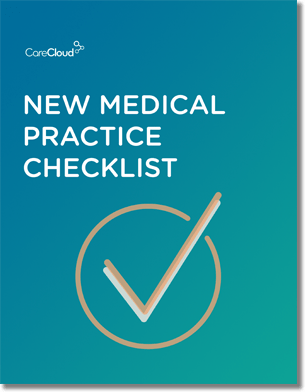The switch from paper records to an EHR can be frustrating for physicians. There are new things to learn, workflows to adjust, and old habits to break, all of which has led many to avoid making the change at all.
However, the speed of adjustment really depends on the individual EHR, so these factors shouldn’t hold physicians back from reaping the rewards of EHR adoption.
Below we look at some of the major complaints physicians have about EHR adoption and how a quality EHR overcomes them.
Some EHRs Are Too Complicated
Physicians often cite that their EHR is difficult to use, an oft-valid complaint. Some EHRs aren’t going to get any easier to use, no matter how much time you spend in training.
But other EHRs like CareCloud Charts cater to human cognitive patterns in ways that improve practice productivity while reducing the chance for medical errors. This results in organizational benefits for your practice, such as improved patient trust and increased profitability.
Doctors Feel Forced to Change
Physicians are cautious of the workflow alterations needed when adopting an EHR, partly because current workflows are so deeply ingrained. With such well-established processes, it’s often tough to identify the ones slowing your practice down.
Because it’s ‘just a part of the job,’ physicians can overlook how much time they spend shuffling through papers. However, our Practice Profitability Index revealed that over 50% of physicians are spending the equivalent of one full workday a week on paperwork.
An EHR with intelligent task management that unifies administrative tasks in one “inbox” gives physicians a bird’s eye view of what needs to get done, while customizable templates help physicians get through clinical charting more quickly.
Meaningful Use is Just Plain Complicated
Meaningful Use core measures were already difficult for physicians to reach in Stage 1, and they are only going to grow more stringent in Stage 2. How is it possible to stay on track while simultaneously adjusting to the functionality of your EHR?
Some practices spend excess cash on hiring an employee specifically dedicated to attestation. Others ask a current employee to handle the task, but this usually detracts from productivity in other areas.
That’s why an EHR with real-time Meaningful Use reporting capabilities is essential. It saves staff members from dedicating too much time analyzing data to find problem areas. Meaningful Use reports show where the problems are, so adjustments can be made quickly.

Do you know what you need when setting up a new medical practice?



